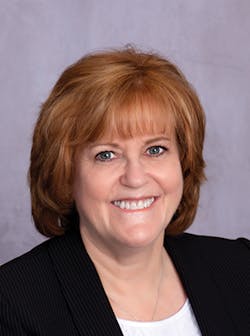What I learned and you must know from our accounts receivable outsourcing division
Nancy Kagan, RDH
After 16 years as a practice management consultant, you might think I have seen it all. I might have agreed with you before my firm and I began our outsourcing division two years ago. What we saw was eye-opening, costly, and just plain wrong. I want to share our top four findings to ensure that you will never have to face these issues.
Intake of information
If patient information is put into dental software incorrectly, the claim can go to the insurance company with the wrong information. It is also possible that the claim will never be received for this same reason. Depending on how long you wait before looking into overdue claims, you might not know what the problem is until you investigate. Any of the following may be incorrect in your system: insurance companies, ID numbers, group numbers, and dates of birth. Double-checking the information entered is critical. This is especially true if the patient has changed insurance companies or employers. Scanning a picture of the insurance card and the date it was entered can save you from having to call patients to ask about their most current plan.
© Homiel | Dreamstime.com
We begin to investigate claims at 30 days. We discover many claims that were never paid because the wrong insurance company was listed in the employee file. Many offices just resubmit claims at the 30-day mark. If you do not investigate the claim and change any misinformation, you will be delaying payment another 30 days. It is important to remember that in most dental software, a resubmitted claim will be considered “current” even if the date of service is 60 days ago. This can make your numbers look better than they truly are. While most offices run an outstanding claims report for claims over 30 days, it is important to look at “current” claims as well. Looking at the date of service, not just the submission date, will tell you if you have any claims that have been resubmitted for services older than 30 days.
Verifying eligibility and benefits
We would all agree that looking into patients’ dental benefits prior to treatment is time-consuming and, on the surface, may not appear to bring a great return. Let me assure you it does! We see so many denied claims due to termination of plans, services not covered, and missing attachments. This is impactful on the practice and the patients. If the patients are not asked specifically at check-in about their plans, they may not tell you if they have changed. Once you receive the rejection, you will need to call your patient to see about new coverage. This call can be ignored, forcing you to bill the patient to get them to respond. This takes time and money. It also delays payment to the office.
If services are denied due to lack of coverage, you may face a very angry patient. Despite how you might feel about this, patients expect for practices to know their coverage. If something treatment planned is not going to be paid and the patient is actually informed that some or all of it will be paid, you will have a hard time collecting from that patient. Expectations are high that we know our patients’ coverage, despite our best efforts to educate patients otherwise.
We recommend that offices keep a cheat sheet for each insurance company that contains the necessary attachments for services that require them. Not sending any or the wrong attachments will delay payment. This may impact some plans that have a 90-day policy for submission of claims after the date of service.
Allocation of payments
Payments must be allocated to the correct patient, procedure, and provider of service. While this may appear to be logical, it is an issue we see every day. Most of the time, posting an insurance payment is easy. You pick the date of service, and the patient and the provider are automatically selected. It is important to look carefully in case more than one family member was in on the same date of service. It is also easy to grab the first date of service you see, but it may not be the services you should be paying. For example, if scaling and root planing has been submitted on two separate dates, you must be careful to choose the correct quads.
The biggest issues arise when posting patient payments. Software is programmed to pay the oldest balance first (FIFO). This may not be where the money belongs. It is essential that you select the patient and provider by distributing the payment manually. If this does not happen, you will not be able to post any subsequent insurance payments correctly. You might also have payments posted to providers who did not treat the patient. This can result in inaccurate calculations when paying associates. We discovered this very thing happening in an office, and they had to take back $12,000 in compensation that an associate had been paid for treatment she did not render.
Let the data speak
Having a long and trusting relationship with an administrative employee is great . . . until it isn’t. Unlike other positions in the office, there are no training requirements for the front desk team. Most admin staff have either been trained by previous employees or have trained themselves. Just because someone “always did it that way” does not mean it is right.
It is key that both the front desk and the owner be educated about what a healthy accounts receivable looks like. If you are relaying on a verbal confirmation from your team, you are in jeopardy of thinking you are in good shape when you might not be. Well-trained employees understand the need for data to support their work, which in turn should give you the peace of mind you need.
You must be able to collect data that will tell you the following:
• What is my total AR?
• How much is over 90 days?
• What is the total of my claims out over 30 days?
• Are old balances being collected when patients come in for treatment?
• Are copayments collected on all appropriate services?
• Are my write-offs in line with my collection percentage?
If you don’t know the answers to these questions, then you are just guessing. That is a dangerous foundation for any business.
If your team is telling you that they are overwhelmed and don’t have enough time to get their work done, you might be paying for this in your bottom line. Outsourcing your accounts receivable will take a tremendous burden off of your team and allow them to focus on patient care. You will find great improvement in scheduling and treatment planning when your staff members don’t have their heads down working on reports or spending countless hours on the phone with insurance companies. It also gives you oversight by an outside party consistently looking at your accounts to give you valuable insight into how daily operations are being handled. This translates to a busier schedule and improved cash flow—a win-win for everyone.
NANCY KAGAN, RDH, is the founder of Summit Dental Partners LLC, a practice management consulting company working with dentists and dental practices throughout New England. The Summit team is known for its hands-on approach to consulting. Kagan is a lecturer on matters relating to the daily operations of dental practices. Contact her for more information about consulting and outsourcing services offered by Summit Dental Partners LLC at [email protected]or (781) 724-7975.


